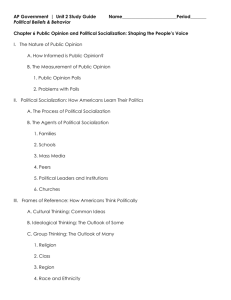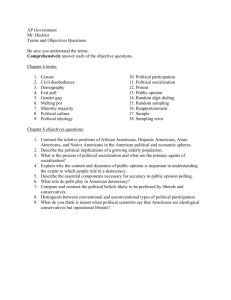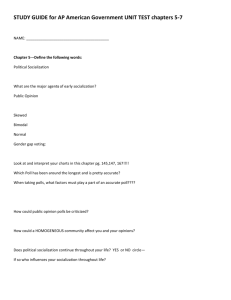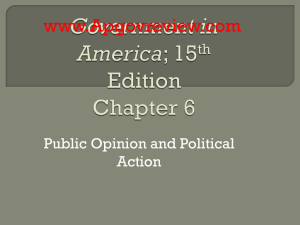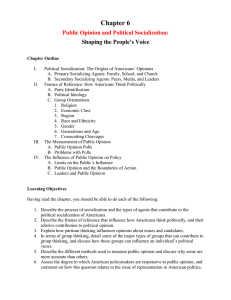AP Government | Unit 2 Study Guide
advertisement
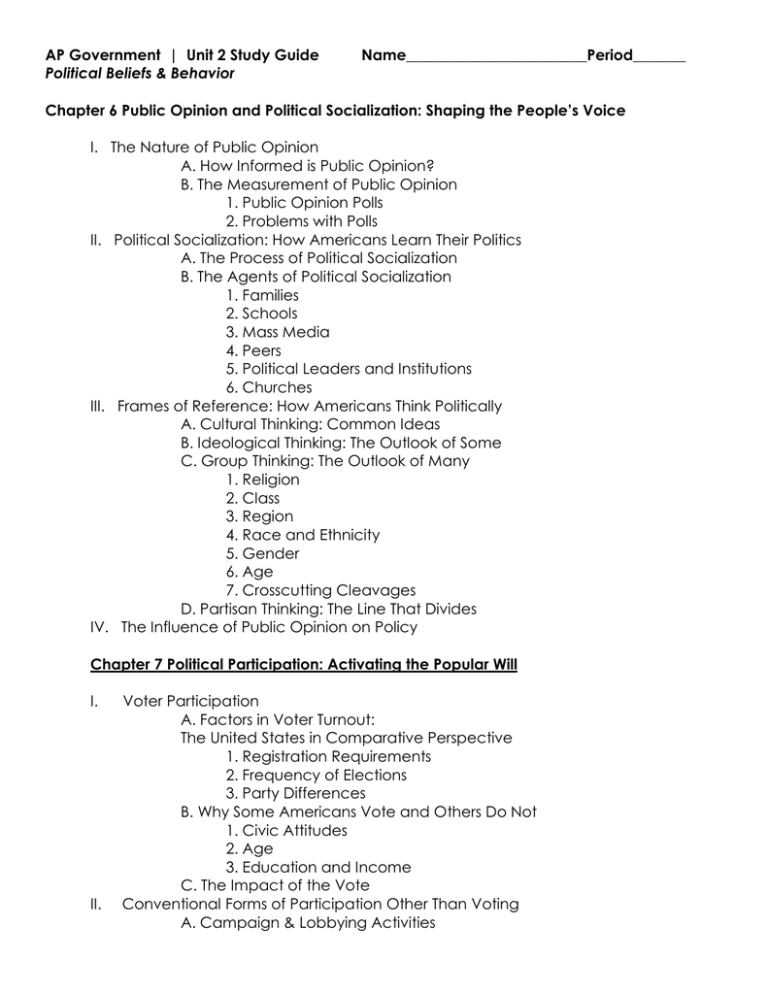
AP Government | Unit 2 Study Guide Political Beliefs & Behavior Name________________________Period_______ Chapter 6 Public Opinion and Political Socialization: Shaping the People’s Voice I. The Nature of Public Opinion A. How Informed is Public Opinion? B. The Measurement of Public Opinion 1. Public Opinion Polls 2. Problems with Polls II. Political Socialization: How Americans Learn Their Politics A. The Process of Political Socialization B. The Agents of Political Socialization 1. Families 2. Schools 3. Mass Media 4. Peers 5. Political Leaders and Institutions 6. Churches III. Frames of Reference: How Americans Think Politically A. Cultural Thinking: Common Ideas B. Ideological Thinking: The Outlook of Some C. Group Thinking: The Outlook of Many 1. Religion 2. Class 3. Region 4. Race and Ethnicity 5. Gender 6. Age 7. Crosscutting Cleavages D. Partisan Thinking: The Line That Divides IV. The Influence of Public Opinion on Policy Chapter 7 Political Participation: Activating the Popular Will I. II. Voter Participation A. Factors in Voter Turnout: The United States in Comparative Perspective 1. Registration Requirements 2. Frequency of Elections 3. Party Differences B. Why Some Americans Vote and Others Do Not 1. Civic Attitudes 2. Age 3. Education and Income C. The Impact of the Vote Conventional Forms of Participation Other Than Voting A. Campaign & Lobbying Activities III. IV. B. Virtual Participation C. Community Activities Unconventional Activism: Social Movements and Protest Politics Participation and the Potential for Influence Chapters 6 & 7 Important Terms & Concepts 1. Political culture 2. Characteristics of American political culture 3. Political Socialization 4. Agents of political socialization 5. Political ideology 6. Economic liberals 7. Economic conservatives 8. Cultural (social) liberals 9. Cultural (social) conservatives 10. Libertarians 11. populists 12. Liberal, Conservative, Moderate 13. Party identification 14. Ideological battlegrounds 15. Types of political participation 16. 4 forms of participation –not voting - campaign, lobbying, virtual participation, community activities 17. Reasons for low voter turnout in America 18. Factors that tell us who REALLY votes 19. suffrage 20. Public opinion 21. Public opinion poll 22. population 23. Sample 24. Sampling error 25. Random sampling 26. George Gallup 27. Tommy Bradley Effect 28. Exit polls 29. Political participation 30. Demographics 31. Gender gap 32. Dilemmas of equality 33. Social (political) movements 34. Political typology 35. Apathy 36. Alienation 37. Civic duty 38. Registration 39. Social capital 40. Voter turnout
